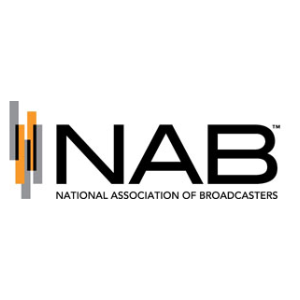
With the US Supreme Court’s rejection of the Chevron deference, the NAB is ramping up its fight to deregulate radio ownership caps with a new filing in the US Court of Appeals for the Eighth Circuit calling for the court to vacate the Local Radio Rule, including AM/FM subcaps.
The NAB, along with Nexstar Media Group, Beasley Media Group, Tri-State Communications, and Zimmer Radio of Mid-Missouri, have challenged the FCC’s 2018 Quadrennial Report ruling in the St. Louis court, one of the most conservative appeals courts in the States.
Late last month, the Supreme Court overruled the Chevron doctrine, a principle established in 1984 that allowed courts to defer to administrative agencies like the FCC in interpreting ambiguous statutes, as long as the interpretation was not arbitrary or illegal. This means courts can use their independent judgment to determine if an agency has acted within its legal boundaries, eliminating the practice of deference when a statute is ambiguous.
The NAB now states that the FCC used the Chevron deference to contradict the Congressional directive which places the burden on the FCC to prove the necessity of existing regulations, a burden the NAB says the FCC improperly shifted to broadcasters.
In this new brief, the NAB uses the lack of Chevron to push for the Eighth Circuit’s intervention. It argues that despite the changes in modern media consumption, including the rise of online streaming services and widespread use of smart devices, the FCC has maintained, and even tightened, broadcast ownership restrictions dating back to before World War II.
The brief says this limitation of broadcasters’ ability to merge stations, diversify programming, and attract advertisers hamstrings local radio and TV in today’s digital age.
NAB CEO Curtis LeGeyt said, “It is long past time for the FCC to modernize its broadcast ownership rules; these are relics from a bygone era, created before the internet, smartphones, social media and streaming. NAB’s brief succinctly demonstrates to the U.S. Court of Appeals for the Eighth Circuit that the FCC has failed to justify that these rules remain necessary to serve the public in light of the immense competition broadcasters face in today’s media marketplace.”







I couldn’t disagree more Barry, we started out in 1958 with a tiny am with poor conductivity in Wausau Wisconsin and spent the last 66 years building to 81 radio stations across 18 markets as the largest privately held radio group in the U.S. In regard to smaller independent players like us competing, our rise proves your first point incorrect, it is possible.
To your second point in 2006 just one year after your 2005 example radio was generating $18.6 billion in revenue across all stations with no digital dollars in our coffers, all of it was over the air revenue. Today that OTA revenue is down to $10.4 billion (per BIA in 2023). We are down as an industry $8.4 billion and are now forced to sell digital assets owned by Google, Facebook and other bahometh digital entities. Each of whom make more in a month than our entire industry makes in a year just so we can keep our doors open. Yet our margins on those digital sales are tiny as the bulk of the revenue from those sales goes to them.
Your third point regarding it hurting stakeholders and listeners having fewer viewpoints is ludicrous. Stakeholders are already hurting from the $8.4 billion in fewer dollars. Fewer viewpoints? There are millions of new viewpoints on all the digital platforms that we now compete with every second of everyday, we don’t live in a vacuum. In our prime it was Newspaper, Radio and TV as the main mediums of information but today it’s a million different sources all available at the touch of a button from a device everyone has in their pocket.
As for job opportunities decreasing, non-sense. We have great job opportunities available across our company every month. If you look across the industry you see job openings across all radio and TV station groups. If jobs were less prevalent then you’d rarely ever see those because they would be filled instantaneously.
Finally, local advertisers are priced out of their local stations to pay rate increases to cover groups debt service? Again, pure non-sense, our rates across our 18 markets are wholly dependent on supply and demand curves. Our rates have declined over the years due to the competition from non-radio companies. Our local business customers have hundreds of advertising options hence the aforementioned $8.4 billion dollar decrease in radio revenues.
I get you don’t understand what’s happening to us small operators because you aren’t one Barry and have never been one so please don’t speak for us because you simply don’t know what you don’t know about what we go through. The iHearts and Audacys will survive because they’re too big to fail but us little guys will all be gone soon without dereg to allow us to consolidate and compete with the monster companies that have cut our OTA dollars nearly in half since 2006.
One question for you Barry. Why do you think it is small operators like us, Zimmer, Mid-west Family, Eagle Radio, Connoisseur and others but not iHeart, Audacy and Cumulus pushing for deregulation?
Despite concerns about so-called “modern media” competition, further relaxing ownership rules will in fact make it even more difficult for small, independent broadcast operators to compete with large chains. In 2005, on a panel at the Mid-year Radio Symposium, I predicted the ultimate collapse of the big supergroups. 2006 saw large operators begin to spin off “unproductive” properties and ‘rightsize.’ Ultimately, further consolidation hurts stakeholders: the listeners have less diversity of viewpoints; job opportunities decrease and local advertisers are priced out of their local stations because of rate increases to cover the station groups’ debt service.